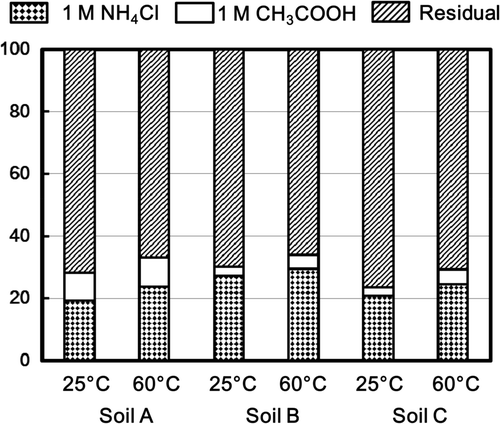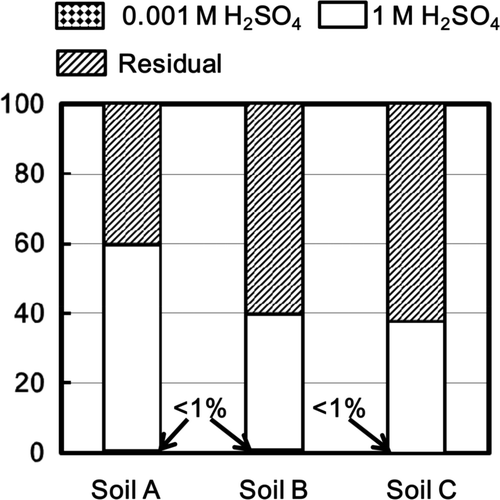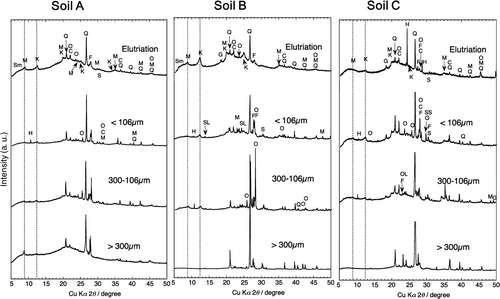Figures & data
Figure 1. Percent fractions of radioactive Cs desorbed from the soils A, B, and C by 1 mole L−1 NH4Cl solution and 1 mole L−1 CH3COOH solution, and residual one.

Figure 2. Percent fractions of radioactive Cs desorbed from the soils A, B, and C by 0.001 mole L−1 H2SO4 solution and 1 mole L−1 H2SO4 solution, and residual one. Arrows show fractions of Cs desorbed by 0.001 mole L−1 H2SO4 solution.

Figure 3. Percent fractions of the resided radioactive Cs in the elutriated fraction, the settled fraction less than 106 μm, the fraction between 106 μm and 300 μm, and the fraction larger than 300 μm of the soils A, B, and C after the treatment of 1 mole L−1 NH4Cl solution and 1 mole L−1 CH3COOH solution.

Figure 4. XRD patterns of the elutriated fraction (WE), the settled fraction less than 106 μm, the fraction between 106 μm and 300 μm, and the fraction larger than 300 μm of the soils A, B, and C after the treatment of 1 mole L−1 NH4Cl solution and 1 mole L−1 CH3COOH solution. Sm: smectite-like clay minerals, M: mica-like minerals, H: hornblende-like minerals, K: kaolinite-like minerals, Q: quartz, O: orthoclose, C: cristobalite, F: feldspar group, S: stishovite (SiO2), G: gibbsite-like minerals, SL: sodalite-like minerals, OL: olivine, SS: sorosilicate.
